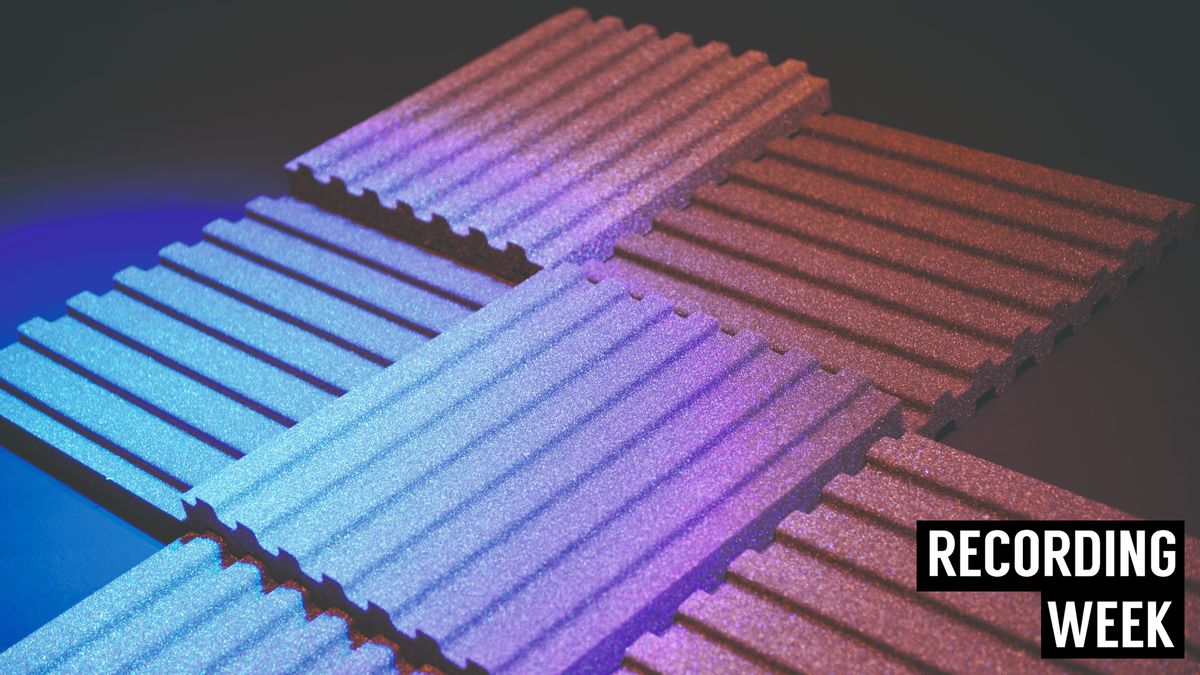How to get the right acoustics in your recording space
Treat your room for the best possible recording results

RECORDING WEEK: When you record an instrument in a space, you’re capturing the direct sound of the instrument and the ambient sound of the space itself.
The balance of room sound and direct instrument sound depends on many factors, including how near the mics are to the instrument, the pickup patterns of the mics and the volume level of the instrument.
However, one thing that remains constant is the acoustic character of the particular space, and most people can hear the difference between a large space such as a concert hall and a small space such as a domestic lounge.
In simple terms, we can view this acoustic effect as having two components: early reflections and reverberant decay, or ‘tail’. The latter tends to be quieter and comparatively diffuse, whereas early reflections tend to be more defined and clearly indicate the size of the space.
Even in a domestic setting, these differences can be quite marked, from the clattery sound of a tiled bathroom, to the reverberant nature of a hallway, or the almost dead sound of a soft furnished space.
The sound of each room is a function of its size, shape and contents, particularly whatever’s on the walls, ceiling and floor. When recording, it’s important to tune in to this and use it to your advantage if possible.
For that reason, if you’re recording in a domestic environment, rather than spending time and money trying to design an acoustic space from scratch, it might be simpler to just use a room that closely approximates the sound you want. Although this may not be particularly convenient and raises issues of isolation (see below), it can often yield the best results.
Get the MusicRadar Newsletter
Want all the hottest music and gear news, reviews, deals, features and more, direct to your inbox? Sign up here.
Whichever space you choose, it is possible to change the acoustic quite dramatically through various means. Typically, the more empty the space, the more ‘live’ it will sound, so to deaden a room you need to put more stuff in it. Upholstery and soft furnishings are very effective, and carpets and curtains in particular change a room’s character noticeably.
Conversely, if you want to liven up a space, add reflective surfaces. The floor is often the nearest surface to the instrument being recorded, so if it’s carpeted, placing a wooden sheet on top can liven things up. Opening curtains and revealing any glass surfaces can also be helpful.
• Recording Week is brought to you in association with Universal Audio
Splendid isolation
Isolation is one of the hardest things to achieve in a recording environment and takes in a number of considerations. First, it’s important to try to isolate the space we’re recording in from outside noise, especially if you’re recording a quiet source instrument, or one with a long sustain/decay.
It should come as no surprise that professional recording spaces go to great lengths in this department, building floating rooms inside rooms, with dual layer doors and large air gaps between window glass. In a domestic or project environment, however, we need to be a bit more realistic, looking at the specific things we can control and those we can’t.
Making sure doors are closed and windows are sealed is obvious, and goes a long way to keeping out mid- and high-frequency sounds – birdsong, sirens and so on. Distance also helps: if your neighbour likes to turn up the bass, getting as far away from the party wall as possible will help. And although in theory the attic is a great place to stick your studio, if it rains or gets overly windy, you’ll be able to hear it through the roof.
The next type of isolation concerns the sounds you make and how bothersome they are to your neighbours.
Once again, keeping windows and doors closed helps, but consider the volume of amps and the time of day you choose to record, particularly if it’s loud stuff like drums. Low frequencies in particular are very hard to contain.
Finally, you need to consider isolation within your recording space. This can be improved to an extent using directional mics (we’ll get to that next), but beyond that, large screens can help divide a space up into zones, smaller screens (or furniture, at a pinch) can be used to ‘box’ away amps, and small ‘reflexion’-style screens work well on individual mics.
Finally, if you have big enough cupboards or are able to run cables from one room to another, this is often the best way to isolate individual instruments or performers.
Computer Music magazine is the world’s best selling publication dedicated solely to making great music with your Mac or PC computer. Each issue it brings its lucky readers the best in cutting-edge tutorials, need-to-know, expert software reviews and even all the tools you actually need to make great music today, courtesy of our legendary CM Plugin Suite.

"A classic compressor for free on Valentine's Day – it must be love!": Universal Audio is giving away an 1176 plugin as a Valentine's gift - here's how to get it and use it

“A magical part is this sidechain with the bass”: Lady Gaga breaks down Disease in new studio video










